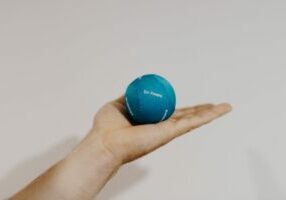The sunnier weather is out so it is time to break out the bike. If you have not recently used your bike, here are some tips before you get rolling and racking up the mileage.
The basics of bike checkup: The ABCs (Air, Brakes, Chain).
Air:
How much air you need depends on your tire size. Sometimes manufacturers have maximum and recommended levels (PSI). Check the sidewalls for the maximum PSI levels. The general rule of thumb is to be at least 10% less than the maximum levels. Another indicator for levels is comfort, if you would like a supple ride, let out more air. For example, a 25mm tire is rated for 95-125 psi. Personally, I use 100 for the front and 110 on the back. On wet road days, I bring it down to 95 and 100 for supple grip while riding. 
Brakes:
Pads: Check to see if your brakes pads are worn down if you have rim brakes. If the rubber is hard or thin (nearly see the pad holder or no groove lines, pictured below) then you are due for new pads.
Cable: If your brake pads are worn and the sensitivity has decreased, you will likely want to tighten the brake cables to allow your braking to become more responsive. How to adjust this cable depends on your bike braking style. Both need to turn the barrel adjuster counterclockwise to tighten the cable and the brake pads should appear to come closer to the wheel rim. The left picture is a flat rise bar with a lever that typically needs to additionally tighten the lockring once cable tension is set.
Chain:
Most commonly neglected bike part, this is the lifeline of the moving bike components. The frequency of lubing of the chain depends on riding weather conditions, mileage, last application and last cleaning. Lube is meant to minimize chain wear by reducing friction and protecting from corrosion. Most importantly, how the chain sounds while riding will indicate if you need to drop lube on each chain roller/pin. In general, reapplication of lube should be done every 100 miles (but know this number varies by product) while chain life expectancy could be up to 4000 miles (most get 2500-3000 miles).
Recommended, but optional, clean the chain with degreaser. Pour degreaser onto a rag and squeeze over the chain while turning the cranks backward. Wipe off any excess and wait about 15 minutes, then apply 1-2 drops of lube per roller/pin. The objective is to have the oil penetrate in between the chain link pins. Clean off excess oil with another rag.
Happy riding!
Exercises You Can Do at Home after a Visit to the Chiropractic Clinic
Stay active at home with exercises from ‘Exercises You Can Do at Home after a Visit to the Chiropractic Clinic’.
Read MoreAthletic Therapy: A Vital Component in Sports Rehabilitation
Discover the importance of athletic therapy in sports rehabilitation in our insightful blog on ‘Athletic Therapy: A Vital Component in Sports Rehabilitation’.
Read MoreA Comprehensive Guide to Spinal Therapy for Athletes
Discover the benefits of spinal therapy for athletes in our comprehensive guide ‘A Comprehensive Guide to Spinal Therapy for Athletes’.
Read MoreHow Chiropractic Techniques are Advancing in Pain and Injury Treatment
Discover the latest advancements in pain and injury treatment through innovative chiropractic techniques.
Read MoreSpine Rehabilitation: How Corrective Exercises Can Help with Posture and Pain Relief
Discover how corrective exercises in spine rehabilitation relieve pain and improve posture – read more now!
Read MoreCorrective Exercises: Your Secret Weapon Against Chronic Pain
Combat chronic pain with corrective exercises featured in ‘Corrective Exercises: Your Secret Weapon Against Chronic Pain’.
Read More









